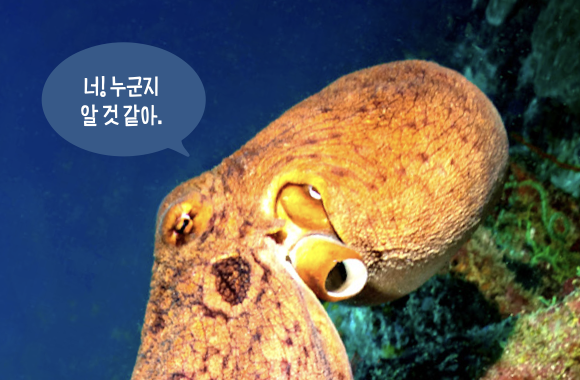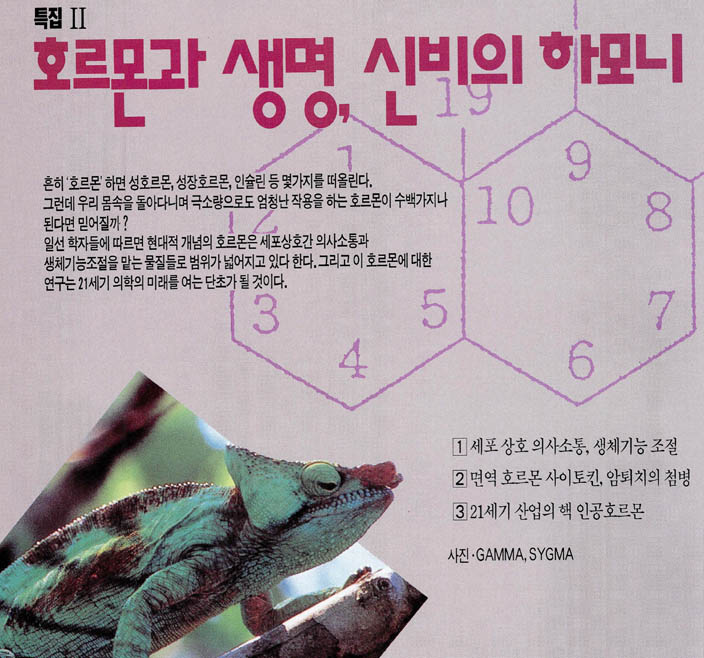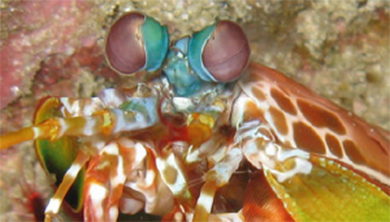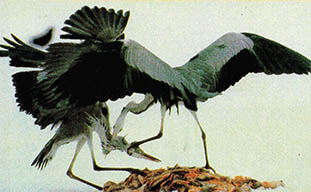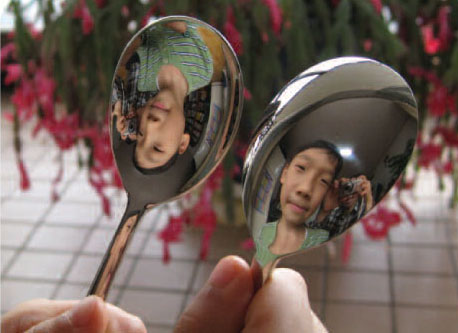플라스틱은 매우 유용하다. 플라스틱은 강하고 값싸며 어떤 형태로든 쉽게 틀을 만들 수 있다. 또한 녹슬거나 변색하지 않으며 썩거나 곰팡이가 끼지 않는다. 떨어뜨렸을 때 깨지지도 않는다. 물과 공기가 스며들지도 못한다. 한가지 유일한 결함이 있는데 이 결함은 굉장한 것이다. 플라스틱을 없애버릴 방법이 없는 것이 바로 그것이다.
다 쓰고난 플라스틱은 버리게 된다. 그러면 수집되어 쓰레기 하치장에 옮겨지고 그곳에 쌓이게 된다. 그러면 그만이다. 여전히 물과 공기는 침투할 수 없으며 녹슬거나 썩거나 곰팡이가 끼지 않는다. 실제로 영원히 남아있게 되며 계속 그런 상태로 쌓이게 된다.
우리가 버리는 모든 물건들은 사실상 자연의 작용에 의해 처리되고 만다.
금속은 녹슬어 가루가 된다. 나무는 썩는다. 종이는 분해된다. 사체(死体)는 썩는다. 동물의 배설물은 식물에 비료가 되며 여러 종의 딱정벌레들이 먹어 치운다. 나뭇잎은 천천히 부서져 퇴비가 된다.
이런 모든 것들은 재순환이 되는 것이다. 생명체 세계의 일부에서 버려진 것은 공기나 물 그리고 다른 생명체에 의해 분해되고 일단 그렇게 된 다음에는 다시 생명체 세계에 들어가게 되다. 이것이 지상에서 생명체가 영겁의 세월동안 번성해온 이유이다.
만일 물건이 써서 없어지고 결코 재사용이 안된다면 우리는 비교적 단기간에 물자 결핍에 직면하고 모두 죽게 될 것이다.
플라스틱의 경우가 바로 그렇다. 플라스틱은 탄소 원자의 긴 배열에 약간의 다른 원자들이 붙어 있는 것이다. 이 탄소 배열은 자연계에는 없는 것이다. 탄소 배열 고리는 꽉 붙어 있어 공기나 물같은 것의 평범한 영향은 플라스틱에 아무런 해도 주지 않고 외면당한다. 박테리아나 곰팡이에서부터 사람과 코끼리에 이르기까지 모든 생명체에서 진화해왔고 자연물을 파괴시키는 자연효소는 플라스틱이 자연산이 아니기 때문에 파괴를 못한다. 어떤 형의 생명체도 플라스틱을 교란시킬 수 없는데 이것은 플라스틱이 '생체 분해'가 될 수없다는 것을 의미한다. 플라스틱은 자연적인 재순환 되지 않는 것이다.
어떤 방법이 나와야 한다. 우리가 해낼 수 있을 법한 것은 기술의 힘으로 재순환을 시키는 일이다. 금속은 해낼 수 있다. 낡고 녹슬고 깨진 금속은 녹여서 정제한 다음 새 물건으로 만들 수 있다. 금속은 없어지지 않는다. 오직 에너지가 소모될 뿐이다. 그러나 우리는 어쨌든 언제나 그렇게 해왔다.
같은 방법으로 플라스틱을 녹여서 재사용할 수가 있다. 단지 이론적으로 난점은 다른 모든 종류의 플라스틱이 존재하고 있다는 것이다. 이것들을 함께 녹일 수는 없다. 병이나 포장지나 기계부품이나 또는 다른 어떤 용도로 쓸 플라스틱을 만드는 데 필요한 특성을 이런 혼합물은 가지 못하고 있다. 혼합해 녹인 플라스틱은 고작 짐싸는 데나 쓰일까 다른 아무데에도 쓸모가 없다. 따라서 특별한 필요에 맞는 특별한 플라스틱을 계속 만들어야 한다.
물론 종류대로 플라스틱을 분류해서 재사용할 수는 있다. 그러나 그런 일은 많은 시간과 노력을 요한다. 그리고 또한 물건들의 각 부품이 다른 플라스틱으로 만들어져 있기 때문에 분리작업은 한층 어렵게 된다.
생체 분해되는 플라스틱을 만드는 것도 또한 가능한 일이기는 하다. 자연계에서 생기는(예컨대 녹말) 탄소 배열을 인공적으로 만들 수 있다. 이런 것은 박테라이나 곰팡이에 의해 분해 될 것이며 그러면 가루로 만들어져 다루기가 쉽게 될 것이다.
그러나 이것도 들리는 것처럼 쉬운 것이 아니다. 너무 쉽게 분해되버리는 플라스틱을 원하는 사람은 없다. 왜냐하면 예컨대 찬장에 놔둔 병이 깨지기를 바라는 사람은 없기 때문이다. 달리 말하면 특별히 처리된 다음에야 생체 분해가 되어도 괜찮은 플라스틱을 사람들은 원할 것이다.
며칠동안 햇볕에 노출시키거나 며칠동안 침수되게 한 다음 본체 분해가 되는 플라스틱을 만드는 것은 가능한 일이다. 어쨌든 쓰레기장에는 햇볕이 쪼이고 빗물은 스며들게 된다. 그러나 쓰레기 더미가 높아지면서 햇볕이나 물이 미칠 수 없는 쓰레기 더미 깊숙히 쌓이게 된다. 그러면 더미 속에 있는 것을 노출시키기 위해 며칠에 한번씩 그 엄청난 쓰레기 더미를 마구 해쳐야 하는 상태가 된다. 엄청난 수고이다.
더구나 생체분해되는 플라스틱에서 어떤 물질이 생겨날지 확실히 알 수 없다. 우리는 보통의 물질 즉 나무, 금속, 분비물, 동물사체 등 생명이 존속한 이래 부패해 왔던 물질들만을 접해왔다. 이런 물질들은 살아있는 생명체에 의해 처리될 수 있으며 만약 그렇지 못했더라면 우리 이미 먼 옛날 멸종되고 말았을 것이다. 그러나 플라스틱의 경우 자연계 물질이 아닌 것으로 구성된 부산물이 분해과정에서 생겨날 수 있다. 이것들은 독성이 있고 발암성이며 또는 다른 어떤 유해성이 있을지 모른다.
그러면 어떻게 해야 하나? 재순환되는 플라스틱 또는 분해되는 플라스틱의 제조는 문제를 해결할 수 없을 것이라고 말하는 사람들이 있다. 그들은 우리가 할 수 있는 유일한 일은 플라스틱을 적게 사용하거나 아예 쓰지 않는 것이라고 주장한다. 그렇지만 서두에서 말했듯이 플라스틱은 대단히 유용한 것이다. 나는 해결책을 찾는 노력을 계속 해야 한다고 생각한다.
Plastics are so useful. They are light. They are strong. They are cheap. They can be easily molded into any shape. They don't rust or discolor or rot or get moldy. They don't break when dropped. They are impervious to water and air. There's only one flaw, but it's an enormous one. We can't get rid of the stuff.
When we're through with a plastic product, we throw it away. It is collected and taken to a dump, and piled up there. And nothing happens to it. It is still impervious to water and air. It still doesn't rust or rot or get moldy. It just stays there practically forever-and accumulates.
Virtually everything else that we throw away is taken care of by natural forces. metal rusts and powders. Wood rots. Paper decomposes. Dead bodies slowly decay. Animal excrement fertilizes plants or is taken care of by various types of beetles. leaves slowly crumble or become compost.
All these things are recycled. Having been discarded by some parts of the world of life, they are broken down by air, by water and by other forms of life, and once that is done, they re-enter the world of life. That is why life has been flourishing on Earth for eons.
If, when things were used up, they were really used up and could never be used again, we would run out of things in a relatively short time and we'd all die.
But that's exactly how it is with plastics. Plastics are long chains of carbon atoms, with a few other atoms added to them ; chains that do not occur in nature. The chains hang together so tightly that ordinary influences in nature, such as air and water, just bounce off harmlessly. Because they do not occur in nature, the natural enzymes that have been evolved in all forms of life from bacteria and molds to men and elephants, and that serve to destroy natural substances, don't work on plastics. No form of life can touch them, which means they are not "biodegradable." They won't recycle naturally.
Something must be done and, one thing we might do, is recycle them by dint of human technology. We can do that with metals. Old, rusted, broken pieces of metal can be melted down, somewhat refined and made into brand-new objects. No metal is lost. We merely use up energy, but we do that all the time, anyway.
In the same way, we can melt plastics and make use of them again -in theory. The trouble is that there are all kinds of different plastics and you can't just melt them all together. You end up with a mixture that doesn't necessarily have any of the properties you need for bottles, or wrapping material, or machine parts or whatever you want to use the plastic for. You just have plastic crud that can be used for nothing , and you have to continue to make special plastic for special needs.
Of course, you can separate plastic into its different kinds and cycle each separately. But that takes more time and effort. Then, too, different parts of some plastic. That made up of different types of plastic. That makes the process of separation even more difficult.
It's also possible to manufacture biodegradable plastics. You can incorporate some from of carbon chains that do occur in nature (starch, for instance.) That will be decomposed by bacteria and mold, and the rest will powder away and be easier to handle.
That's not as easy as it sounds. You don't want to make plastics too easily biodegradable, because you wouldn't want your bottles, for instance, to go to pieces while they are standing in your cupboard. In other words, we would want plastics to be biodegradable only after they have been specially treated.
It is possible to prepare plastics that are biodegradable only after they have been exposed to sunlight for several days, or left to soak in water for several days. On the dump sites after all, the sunshines and the rain soaks in. However, as the dump piles up, deep inside you get a quantity of plastic that neither sun nor water ever reaches. And you have a vision of having to stir up the whole pile of miserable dump material every few days so that everything inside gets exposed.
Furthermore, you can never be sure what materials will be produced by biodegradable plastic. With ordinary materials-wood, metal, excrement, dead animals and so on-we are dealing with what has been rotting ever since life has existed. The materials produced can be handled by living things, or we would all have died out long ago.
With plastics, however, products may be formed that aren't composed of natural substances. They may be toxic, or carcinogenic, or in other ways very damaging.
Well, then, what do we do? There are those who say that recycling plastics or making them biodegradable won't solve the problem. They insist that he only things we can do is use less plastic, maybe no plastic. But then, as I said at the start, plastics are so useful. I think we'll just have to continue looking for solutions.
이 기사의 내용이 궁금하신가요?
기사 전문을 보시려면500(500원)이 필요합니다.
1989년 12월 과학동아 정보
🎓️ 진로 추천
- 화학·화학공학
- 환경학·환경공학
- 신소재·재료공학
1989년 12월 과학동아 다른추천기사





